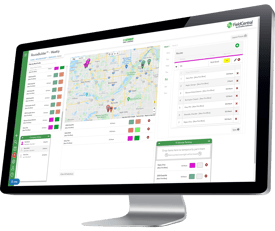 Planet’s Green Industry Conference was just this week and there were tons of speakers and presentations given. One of those presentations was a 10 Step Planning Model, given by Mike Ratchford, of AGBS Printing and Promotional Products. Ratchford is an expert when it comes to planning and promoting your business and we wanted to share how 7 of those steps in his Planning Model can help you plan within your field service management business because we think it’s really good!
Planet’s Green Industry Conference was just this week and there were tons of speakers and presentations given. One of those presentations was a 10 Step Planning Model, given by Mike Ratchford, of AGBS Printing and Promotional Products. Ratchford is an expert when it comes to planning and promoting your business and we wanted to share how 7 of those steps in his Planning Model can help you plan within your field service management business because we think it’s really good!
As a disclaimer, not all planning processes will be the same. Sometimes you can skip a step, while other times you may need to add in a few more steps. Rather than following these steps word for word or action for action, use them as a guideline to your planning.
- Plan on paper – Write down your game plan. It is easier if you can see something physically laid out on front of you than ideas bouncing around in your head all at once.
- Keep the plan simple – Your plan should be your outline, not the entire project all at once. Trying to get too complicated or too in detail can cause you to actually fear your plan. Make the plan simple.
- Set specific goals and targets – Goals are a great way to keep you on track with your plan. Have check points you want to reach each week, month, or year. Ratchford suggest a who, what, when set of goals and targets.
- Prioritize potential customers – Know who you are working to get. Have a set description of the customer you are hoping to gain. You can’t find new revenue unless you know who you are looking for.
- Establish a budget – Usually any new plan will involve some sort of funding. Understand where you are at financially and what you can afford. One of the worst things to happen is to have an entire plan laid out and then realize you can’t afford to complete it. You wouldn’t build a new house without knowing you could afford it right?
- Plan for problems – There will be bumps in the road. Ask yourself “what if” questions. Planning for the problem is a good way to prepare yourself and your company if the problem actually does occur. Surprises can be fun, but not if they are bad. Know where things could get sticky and have a backup for it.
- Plan your message – Whether you are selling this new plan to a customer or your employees, you will need to sell it. Develop a message including benefits and solutions for your plan so that others can have a glimpse at your vision.
A plan is always a good thing to have. Jumping in head first can be dangerous, especially if you’re in the shallow end of know what you’re doing. Follow some or all of these steps to get your plan in motion and on the right track!







